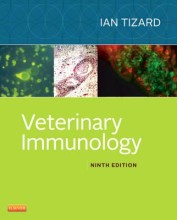Variability and its measurements - Molecular variability
19 important questions on Variability and its measurements - Molecular variability
The technique of gel electrophoresis....
- Enzyme loci detected by this method are knows are allozyme loci
How does electrophoresis work?
What are codominant variants?
- Higher grades + faster learning
- Never study anything twice
- 100% sure, 100% understanding
What is the most commonly used method for surveying DNA sequencing variation?
Studies of further loci and species show that...
- Indels are much less common in protein-coding sequences, where they may alter the reading frame, causing loss of protein's function
Repeat number polymorphisms and copy number polymorphisms
When comparing estimates of genome-wild diversity in different populations or species...
The number of distinct alleles possible at a given locus (a defined region of the genome) depends on....
What is a haplotype?
- Two haplotypes from a population will usually differ at multiple sites, unless only a short length of sequence is studies
What is the effect of recombination on haplotype variability?
With mendelian inheritance in a sexual population...
- variation is therefore preserved
- The same holds for asexual reproduction, since each different genotype reproduces itself exactly
What is coefficient of kinship?
What is the inbreeding coefficient?
What is the fixation index (F)?
- Positive F = excess of homozygotes
- Negative F = excess of heterozygotes
Positive assortative mating also....
- Negative assortative mating has the opposite effect
Assortative mating can affect...
What are the different mutational changes?
- Polyploidy -> Multiple complete sets of chromosomes
- Deletions
- Duplications
- Inversions
- Translocations
Point mutations -> most frequent
What are the mutation rares of most DNA-based genomes?
- Mutation rates are greatly increased by mutations in the genes controlling them
In multicellular organisms with a germline...
The question on the page originate from the summary of the following study material:
- A unique study and practice tool
- Never study anything twice again
- Get the grades you hope for
- 100% sure, 100% understanding




























